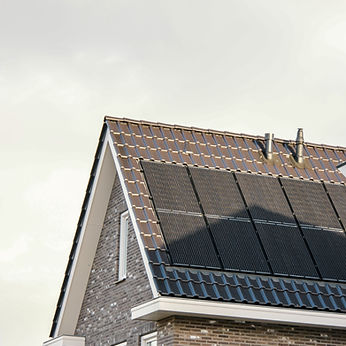California Solar


Understanding Solar in California
California's abundant sunshine offers significant potential for solar energy generation. The state's climate is ideal for solar panels, which can produce more electricity here than in many other parts of the country.
California has been at the forefront of encouraging solar adoption through a combination of state incentives, net metering programs, and renewable portfolio standards that require a significant portion of the state’s electricity to come from renewable resources.
How Solar Works
Solar panels convert solar energy into electricity. They work by absorbing the solar rays from the sun and then converting them to an electric current that is sent to your home or business. The solar power can be used instantly, saved for later use, or sold back to the grid depending on how you configure your solar system!
The amount of solar energy solar panels can generate depends on the solar panel size and how much direct sunlight they are able to capture. The more solar electricity you use, the more solar power is used!
In California, solar panels work in a variety of different conditions and can be used any time, no matter what the weather is like outside! Solar panels in California will generate power even if it's cloudy out or at night.
Your Home Solar Options
When it comes to solar power, your home is one of the best places for you to start. Solar panels in California are a good way to generate renewable energy and save money over time!
There are three main types of solar systems: stand-alone photovoltaic (PV) systems using string inverters or microinverters, grid-tied solar systems with battery backup inverters or without battery backup inverters, and off-grid photovoltaic (PV) systems.
To help you make the best choice, it's important to understand all the different solar panel options available.
Solar energy is the newest way to lower your electricity bill. Here are three of the most popular options, explained in more detail below:
-
Purchase a solar system (with cash or a loan) and own both the system and all the power it produces
-
Lease a system, usually for a monthly rate, and own all the power it produces
-
Enter a “power purchase agreement” (PPA) to buy (in price per kWh) the electricity the system produces

Purchase
You're going solar! When you buy a system, you become the owner of the system and enjoy all the benefits from the electricity it produces. The cost of upkeep varies depending on your provider, but most residential solar systems require little to no maintenance, and some providers offer maintenance services on purchased systems.
Solar panels can be an expensive initial investment, but they are also an investment in the future. Solar panels can lower your utility bills and reduce environment-damaging emissions. And, in most jurisdictions, you can benefit from tax credits or other incentives that promote solar energy. If you do decide to sell your home, you may list the solar power system in the sale just like any other major home component.

Lease
In many markets, you can lease a solar system for a set time period. The solar company owns the system, leases it to you, and is responsible for maintaining it. You make monthly payments to the solar company at a specified rate for use of the system.
Some solar vendors will allow you to get installation and equipment leasing at no up-front cost (“no money down”), though this doesn't mean the system is free. Some companies also offer customers a financing option that allows them to purchase the system after a specific timeframe. A third-party-owned system means the company that installed your solar panels owns them and you will enter into a power purchase or leasing agreement with the company in order to use the solar energy to offset your electricity cost. Make sure you ask questions about whether these agreements are transferable if you plan on selling your home in the future.

Power Purchase Agreement (PPA)
From a consumer’s perspective, a power purchase agreement (PPA) is very similar to a 30-year lease contract. Under the terms of the PPA, you pay for the units of electricity generated by your new solar system rather than leasing the entire system and paying an up-front fee regardless of how much energy it actually generates. A PPA is a contract between you and the company that owns the solar panels. The benefits to a PPA are similar to those of going solar under a lease agreement: no equipment costs, which reduces your upfront investment in the system and lowers or eliminates your monthly electricity bills.
A power purchase agreement, or P.P.A., is also a third-party ownership arrangement because the solar company owns the system; however, some companies give you the option to buy back the system after a certain period of time has passed. You’ve got options for when you sell your home, so make sure to ask about PPA fees at the time of installation.
California Tax Credit
In 2023, California continues to lead the way in solar adoption with incentives designed to make solar more accessible to homeowners. The standout incentive is the Federal Investment Tax Credit (ITC), allowing homeowners to deduct a portion of their solar system costs from their taxes. While the California Solar Initiative (CSI) has achieved its initial goals, it paved the way for ongoing solar rebates and programs.
Additionally, the Self-Generation Incentive Program (SGIP) offers rebates to homeowners installing energy storage systems, enabling them to keep excess solar energy for later use or during power outages. Furthermore, the Net Energy Metering (NEM) policy rewards solar energy system owners with utility bill credits when they send surplus power back to the grid. Collectively, these initiatives not only lower the costs of solar installations but also support California residents in their efforts to minimize environmental impact.
Details of California Solar Incentives
Federal Solar Investment Tax Credit (ITC)
One key financial benefit for Californians installing solar is the 30% federal solar tax credit, often referred to as the ITC or Residential Clean Energy Credit.
This substantial tax incentive allows you to deduct 30% of the total cost of installing both solar panels and battery storage systems from your federal taxes, without any maximum cap. Enhanced by the Inflation Reduction Act, this ITC rate is locked in at 30% through 2032 and has been expanded to include standalone battery storage systems, even if they are not coupled with solar panels.
California Electricity Rates
Electricity rates in California are among the highest in the United States, driven by various factors including high demand, environmental regulations, and investments in renewable energy and grid infrastructure. These rates vary by utility and are subject to changes based on time of use (TOU), which means that electricity costs more during peak demand hours.
The elevated cost of electricity in California makes solar energy an attractive alternative for homeowners. By installing solar panels, residents can lock in lower, predictable energy costs over the long term. This is particularly advantageous given the state's abundant sunshine, allowing for efficient solar energy generation and the potential for significant savings on electricity bills.
California's tiered rate structure means that households consuming higher amounts of electricity are charged at a higher rate. Solar installations can help keep consumption from the grid within lower-priced tiers by offsetting usage with solar production, especially during the daytime when rates might be higher due to peak demand.
California Net Metering
California's NEM 3.0 is the latest iteration of the Net Billing Tariff, reshaping the crediting structure for surplus solar power for homeowners. To maximize the financial benefits under NEM 3.0, homeowners are encouraged to utilize solar energy directly within their homes and to minimize energy exports to the grid, especially during the high-demand hours of 4 to 9 p.m.
The design of NEM 3.0 is such that it targets a payback period for solar investments to be around nine years, regardless of whether a battery is included. However, this can vary based on specific factors like the size of your solar system, your energy usage patterns, and the total installation costs.
Cash Purchase VS Loan: What’s Best for California Homeowners?
When it comes to investing in solar energy for a California home, the decision between a cash purchase and a solar loan has significant implications for cost and ownership.
Opting for a cash purchase means a homeowner pays the full price of the solar system upfront. This approach eliminates monthly payments, potentially offers the largest long-term savings on energy costs, and may increase the resale value of the home since the system is fully paid off.
Conversely, a solar loan can minimize initial expenses by spreading the cost of the system over time. Homeowners still benefit from solar incentives and rebates, and over time, the energy cost savings can offset the loan payments. Eventually, the system becomes the property of the homeowner once the loan is repaid, combining the benefits of ownership with manageable payments.

1
Get your system size and battery details
2
Find your solar cost and energy usage
3
Learn about the incentives in your state
Helping customers make solar simple!
Get the most out of your new home solar system
Switch to solar power and start saving money right away
There are many benefits to switching over to solar energy including lower monthly bills, improved property value, and cleaner air. The solar panels in California can help you live a more sustainable lifestyle while also lowering your carbon footprint by displacing emissions that would have been created from traditional power plants. Solar is an investment with the potential for significant returns on investment, so solar panels are quickly becoming a more affordable way to generate power!
You may want solar installation costs depending upon your area--read more about that below--and you'll want to ask solar experts about solar panel efficiency so that you know how much power each solar cell produces and what the solar cells are made of.
For those looking to reduce their environmental footprint, solar installation is becoming more affordable with the help of government incentives and rebates. There are around 20 different types of tax credits for investments in renewable energy or any infrastructure project that directly reduces greenhouse gas emissions (such as wind farms). These tax benefits can be used by both individuals and corporations alike while also helping defer some upfront costs associated with installing a system such as labor expenses or expensive panels themselves.
For example, an individual might have difficulty paying $25K upfront on equipment worth $32K but they may qualify for a 30% federal investment credit which would lower the amount down to just under $21k! The Solar Energy Industry Association estimates that about half of all new homes will use this solar energy by 2022, so solar installation is becoming an increasingly popular option to go green!





